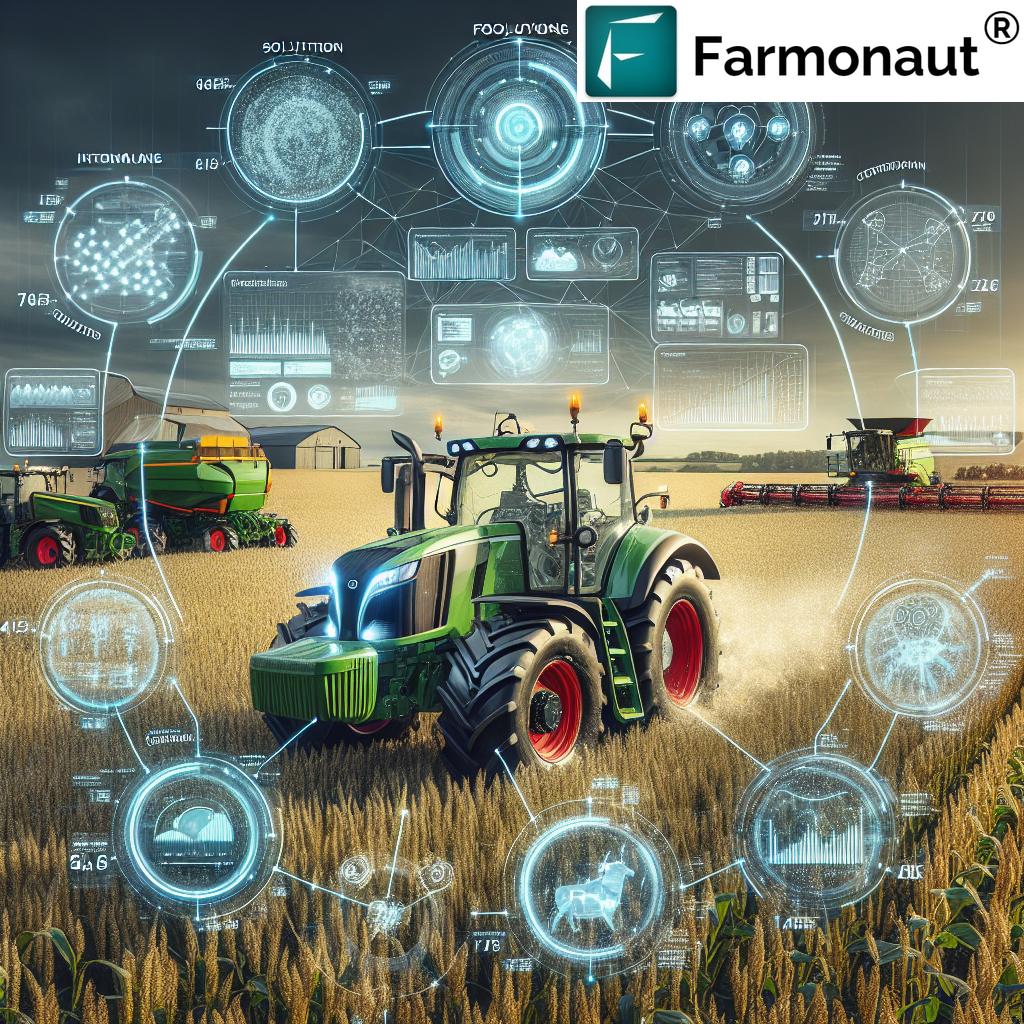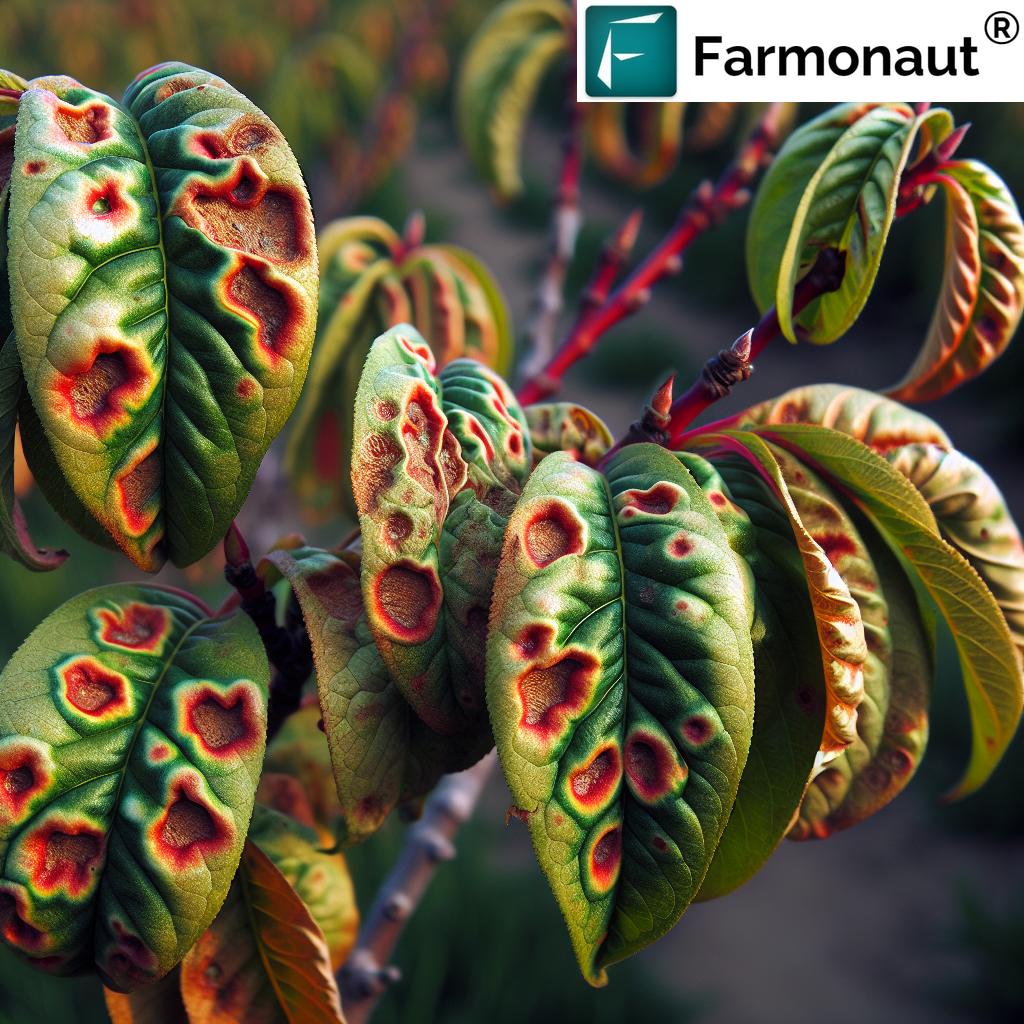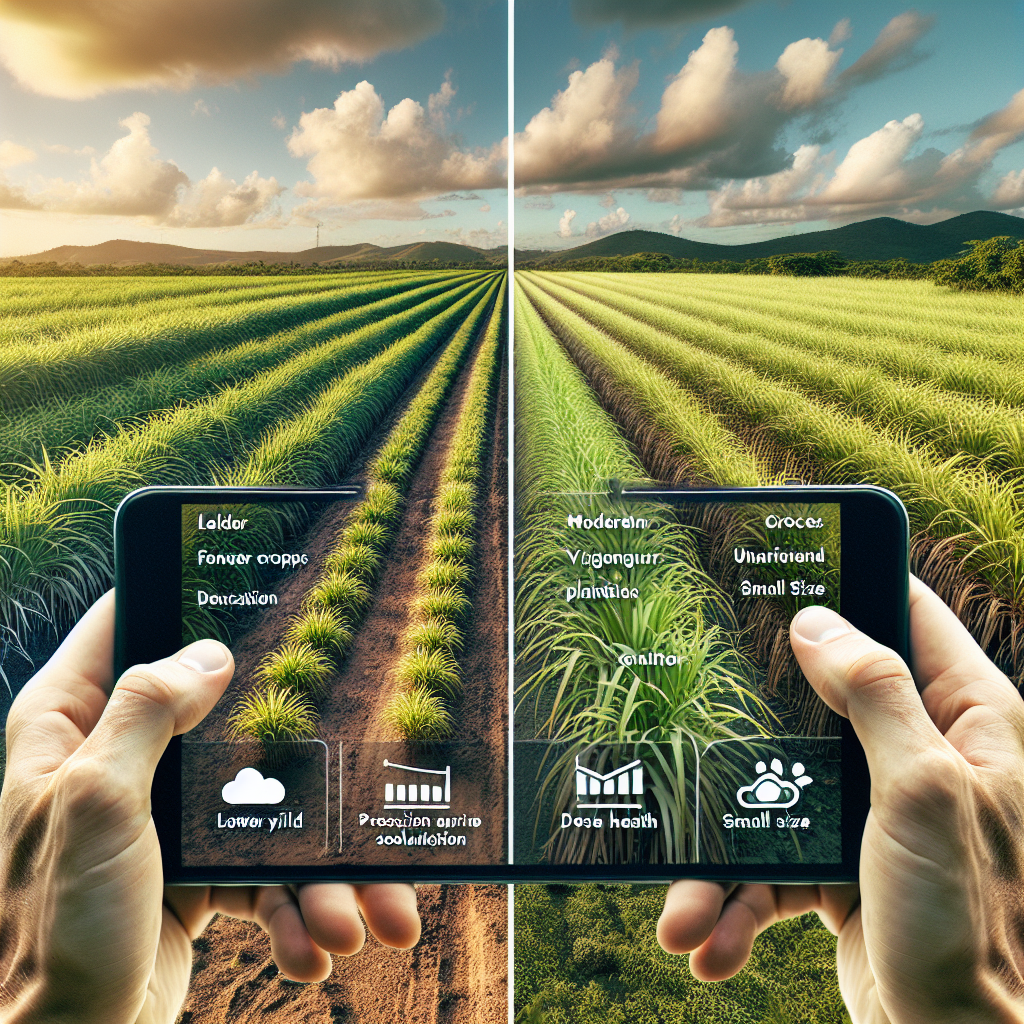Agricultural Farming Drone Reviews & 2025 Cost Guide
Explore how agricultural farming drones and cost comparison of vertical farming vs traditional farming are revolutionizing efficiency and sustainability in 2025.
Table of Contents
- Introduction
- Agricultural Farming Drone — The Ultimate Farming Companion Reviews (2025)
- Best Agricultural Drone Models | 2025 Comparison Table
- Key Features & Benefits of Modern Farming Drones
- 2025 Cost of Vertical Farming vs Traditional Farming
- Vertical Farming vs Traditional Farming — 2025 Cost Comparison Table
- Vertical Farming: Technology, Resource Savings, and Future Outlook
- How Farmonaut Helps Drive Agricultural Technology and Efficiency
- FAQ: Agricultural Drones & Vertical Farming Cost Comparison
- Conclusion
“**In 2025, vertical farming costs are estimated to be 30% higher per acre than traditional farming.**”
Introduction
The agricultural landscape in 2025 is unrecognizable when compared to the early 21st century. Among the innovations making significant impacts are farming drones and vertical farming systems, both of which are redefining how efficiency, sustainability, and profitability are approached worldwide.
In this comprehensive cost guide and review, we delve into agricultural farming drone 鈥�the ultimate farming companion reviews, cost of vertical farming vs traditional farming—key technologies setting new standards in productivity and resource management. Whether you are a grower, investor, technology enthusiast, or a policymaker in agriculture, understanding these modern solutions is crucial for making effective decisions in 2025 and beyond.
Focus Keyword(s): The primary focus is on agricultural farming drone 鈥�the ultimate farming companion reviews, cost of vertical farming vs traditional farming, along with important keywords and concepts like automation, high yield, cost, resource, water, land, labor, environmental impact, modern agriculture, advanced sensors, analytics, precision, efficiency, crop health, innovative technology, 2025 advancements, traditional vs vertical systems, and more.
Agricultural Farming Drone — The Ultimate Farming Companion Reviews (2025)
Agricultural farming drones have emerged as indispensable tools for modern farmers. Thanks to rapid advancements in sensing, AI-powered analytics, and automation, 2025 drone models are revolutionizing farming practices worldwide. They offer real-time monitoring, crop health insights, soil condition tracking, and efficient application of seeds, water, fertilizers, and pesticides.
Let’s delve into the 2025 reviews, examining how drones are helping farmers achieve enhanced yield, reduced costs, and improved sustainability—truly becoming the ultimate farming companion.
Why Drones Are “The Ultimate Farming Companion” in 2025
- 1. Precision Crop Monitoring: Drones survey vast tracts quickly and efficiently, using multispectral imaging to detect plant stress invisible to the naked eye—enabling early interventions for better crop health.
- 2. Efficient Resource Management: Advanced sensor data pinpoints nutrient/water deficiencies, helping optimize irrigation and fertilization to reduce waste and lower input costs.
- 3. Automated Seeding and Spraying: Newer drone models autonomously distribute seeds, fertilizers, and pesticides, drastically lowering manual labor intensity, and reducing operational expenses.
- 4. Advanced Pest and Disease Control: High-resolution cameras and AI-based analytics make early identification of pest infestations or diseases a reality. This leads to precision application of control agents, minimizing environmental impact.
- 5. Data-driven Yield Estimation and Forecasting: AI-powered drones provide accurate yield estimates and predictive analytics using detailed plant growth analytics, helping with planning and marketing.
Entry-level drone models in 2025 are available from $1,500 to $3,000, whereas advanced drones with multispectral sensors and AI capabilities range between $8,000 to $15,000. With their significant positive impact on crop yields, labor, and resource management, the investment in a quality agricultural drone is increasingly justifiable for most farm operations.
Did you know? Farmonaut’s satellite-based crop and large-scale farm management tools offer real-time, AI-enabled crop health monitoring and resource advisory, reducing operational costs and boosting productivity for farmers and farm managers worldwide.
“**Top agricultural drones reviewed in 2025 can survey up to 200 acres per hour for crop monitoring.**”
Best Agricultural Drone Models | 2025 Comparison Table
Choosing the right agricultural drone depends on your acreage, intended use (monitoring, spraying, seeding), and budget. Here’s a side-by-side review comparing today’s leading drone models for farming—all geared toward efficiency, high yield, automation, and modern agricultural technology.
| Brand/Model | Flight Time (minutes) | Payload Capacity (kg) | Coverage Area per Hour (acres) | Sensor Types | Estimated 2025 Cost (USD) | Notable Features |
|---|---|---|---|---|---|---|
| Dji Agras T50 | 45 | 40 | 180 | Multispectral, NDVI, RGB | $14,000 | Fully autonomous flight, AI path planning, real-time terrain mapping |
| XAG P100 Pro | 50 | 35 | 190 | Multispectral, Thermal, NDVI | $13,500 | Advanced obstacle avoidance, ultra-precise spraying, modular design |
| Yamaha FAZER R | 55 | 32 | 200 | RGB, NDVI, Multispectral | $15,000 | High-endurance, variable rate application, night operation-capable |
| Sentera DGR60 | 42 | 10 | 120 | NDVI, Multispectral, Thermal | $9,800 | Custom analytics, cloud integration, rapid deployment |
| PrecisionHawk Lancaster 8 | 60 | 12 | 135 | NDVI, Multispectral, RGB | $8,900 | GIS compatibility, large sensor payloads, efficient energy use |
| Parrot Bluegrass Fields | 30 | 2 | 75 | NDVI, RGB | $2,500 | Entry-level, lightweight, rapid field surveys, easy-to-use interface |
Note: All drone prices and specifications above are projected for 2025; coverage may vary by crop, field conditions, and software optimization.
Key Features & Benefits of Modern Farming Drones in 2025
Precision Agriculture: The Power of Advanced Sensors and AI Analytics
The latest farming drones in 2025 directly address the central challenges of modern agriculture: increasing yields while reducing costs and resource usage. Here’s how these technologies translate into real-world results:
- Advanced Sensor Suites: Multispectral and NDVI sensors capture data beyond human vision, detecting early crop stressors, nutrient issues, or disease outbreaks.
- Real-Time Data Collection & Analytics: Instant cloud uploads allow for real-time monitoring, trend analysis, and actionable insights, letting farm managers adapt their strategies quickly.
- Optimized Input Application: By targeting specific tracts with precise amounts of fertilizers or pesticides, drones help avoid overuse, reducing operational expenses and environmental pollution.
- Automation: Autonomous flight planning, obstacle avoidance, and application modules require less human intervention—reducing labor intensity and operational costs.
- Yield Optimization: Ongoing crop health monitoring and early interventions generate higher average yields per hectare, making a direct impact on revenue and profitability.
- Minimal Environmental Impact: Drones promote sustainability by reducing pesticide/fertilizer usage, limiting soil compaction, and cutting greenhouse emissions linked to farm equipment.
In brief: Agricultural farming drone 鈥�the ultimate farming companion reviews show that drones offer a powerful, data-driven approach for helping farmers worldwide produce more with less, while building toward environmental and operational sustainability.
For enhanced integration, Farmonaut’s Satellite Data API offers developers powerful access to real-time crop mapping, soil health, and farm management data. For seamless implementation, visit our API Developer Docs.
Farmonaut’s platform stands out by combining satellite imagery, blockchain-based traceability, AI-powered analytics, and environmental impact tracking—delivering continuous improvement in productivity, traceability, sustainability, and resource efficiency across agricultural and related sectors worldwide.
2025 Cost of Vertical Farming vs Traditional Farming
Comparing the costs, yields, and environmental impact of vertical farming vs traditional farming is vital for anyone invested in the future of agriculture. Below, we break down the 2025 numbers, key differences, and practical implications.
Traditional Farming: The Backbone of Global Food Production
- Land Usage: Large tracts of arable land, sometimes spanning hundreds or thousands of hectares.
- Environmental Exposure: Dependent on weather, water availability, and climate variability—introducing risk and yield unpredictability.
- Cost Factors: Includes acquisition/lease of land, machinery, seeds, irrigation infrastructure, fertilizers, pesticides, fuel, and labor.
- Operational Intensity: High labor intensity and frequent input costs; lower upfront costs but exposure to risk.
- Yield Volatility: Yield per area is moderate to high, but can fluctuate year-on-year due to weather and pest/disease outbreaks.
- Environmental Impact: Soil degradation, high water use, risk of runoff/pollution from chemicals.
Vertical Farming: Smart, Sustainable, Controlled Systems
- Land Efficiency: Minimal horizontal land required—crops are grown vertically using shelves/racks, perfect for urban spaces.
- Controlled Environment: Advanced climate, irrigation, and lighting systems mean year-round production with little variability.
- Cost Factors: Much higher initial setup cost for infrastructure, lighting, HVAC, and automation compared to traditional systems.
- Operational Costs: High energy expenses, but increasingly offset by LED advancements and renewable sources.
- Yield and Risk: 10-20x higher yield per square meter than traditional farming; risk of crop loss is dramatically reduced due to absence of weather and pests.
- Resource Savings: Up to 95% less water usage, minimal fertilizer/pesticide runoff, and reduced transportation emissions from urban proximity.
- Labor Efficiency: Automation and robotics bring labor intensity down; fewer people can manage larger production volumes.
2025 Key Numbers: Cost of Vertical Farming vs Traditional Farming
- Vertical farming costs are estimated to be 30% higher per acre than traditional farming, but can produce 10-20x more crops per square meter.
- Significant reduction in water usage—vertical systems use only a fraction of water compared to field farming.
- Operational expenses for vertical farming—primarily driven by energy for LED lighting and climate control—remain high ($300,000-$600,000 annually/per hectare).
- Traditional farming annual running costs—mainly labor, fuel, inputs—are lower ($160,000-$275,000 per hectare, depending on the crop and geography).
- Yields: Vertical farming supports 200-350 tonnes/hectare/year for leafy greens (vs 30-50 for field-grown).
Join the Future of Food Security:
Farmonaut’s carbon footprinting product helps vertical and traditional farmers track, analyze, and reduce environmental impact—driving global sustainability, while boosting operational efficiency.
Vertical Farming vs Traditional Farming — 2025 Cost Comparison Table
This table provides an at-a-glance comparison of vertical farming vs traditional farming in 2025—making it easy to see how the two stack up by cost, inputs, yield, and resource usage.
| Farming Type | Initial Setup Cost (USD/hectare) | Annual Running Cost (USD/hectare) | Average Yield (tonnes/hectare/year) | Resource Savings (Water, Land Usage %) |
|---|---|---|---|---|
| Traditional Farming | $5,000 – $40,000 | $160,000 – $275,000 | 30 – 50 |
Water: Baseline Land: Baseline |
| Vertical Farming | $500,000 – $1,500,000 | $300,000 – $600,000 | 200 – 350 |
Water: Up to 95% saving Land: Up to 99% saving |
Costs in this table are indicative, based on industry averages in 2025 and will vary by crop, energy mix, geography, and system choices.
Learn how Farmonaut’s blockchain-based product traceability system helps agri-businesses and vertical farm operators ensure transparent, secure tracking of produce from seed to store shelf, boosting consumer trust and regulatory compliance.
Vertical Farming Spotlight: Technology, Resource Savings, and Future Outlook
Vertical farming in 2025 is powered by a unique convergence of automation, precision sensors, lighting advancements, and sustainable climate control systems. Let’s zero in on the standout features that separate vertical farms from traditional agriculture:
- Controlled Environment Agriculture (CEA): Fully enclosed growing systems with precise regulation of temperature, humidity, CO₂, and light.
- Hydroponics and Aeroponics: Crops grow using water or mist—no soil necessary. This reduces disease risk and maximizes resource absorption.
- LED Lighting Innovation: Energy-efficient LED arrays provide optimized wavelengths for maximum plant growth, enabling vertical stacks and 365-day productivity.
- Urban Integration: Production moves closer to consumers in cities, cutting transport costs and emissions.
- Automation & Robotics: Simple to advanced robotics automate seeding, transplanting, harvesting, and packaging—helping reduce labor costs and human error.
- Data, AI, and Sensors: Advanced analytics and IoT sensors provide feedback loops for continuous process optimization and smart climate/resource tuning.
While 2025 costs of vertical farming vs traditional farming remain higher at the outset, the combination of higher yield, water efficiency, energy and labor savings, and predictable output makes vertical farming a compelling choice for urban agriculture, land-limited regions, and premium/high-value crop markets.
Farmonaut’s platform also supports vertical and urban farmers with features such as fleet monitoring (fleet management tools for logistics), real-time environmental monitoring, and AI-guided resource optimization.
Farmonaut leverages satellite-driven data for crop loan verification and insurance, empowering financial institutions with geospatial evidence, reducing fraud, and increasing farmer access to credit or risk coverage.
Farmonaut Subscriptions: Affordable Access to Satellite Data & AI Agriculture Tools
Farmonaut democratizes access to satellite-driven insights and AI-powered agricultural technology. Whether you manage traditional or vertical/hydroponic farms, our platform provides cost-effective, scalable tools for real-time crop monitoring, AI advisory, traceability, environmental compliance, and more:
Access your subscription anytime via web, Android, or iOS.
How Farmonaut Helps Drive Agricultural Technology and Efficiency
As a pioneering satellite technology company, we at Farmonaut are committed to making advanced, satellite-driven agricultural solutions affordable and accessible to farmers, agri-businesses, governments, and financial institutions worldwide. Our mission is to help users optimize resources, improve yields, and promote sustainability—whether they use traditional field crops, modern drones, or advanced vertical farming systems.
Our unique strengths for 2025 and beyond include:
- Real-time Satellite Monitoring: Delivering actionable insights via multispectral imaging and custom analytics for crop health, soil conditions, and environmental tracking.
- AI-Powered Advisory: Our Jeevn advisory system guides users in weather, crop, and resource management.
- Blockchain Traceability: Reliable tracking from farm/source to market boosts transparency and builds trust.
- Fleet and Asset Management: Software tools reduce operational costs by optimizing equipment, transport, and labor scheduling.
- Environmental Impact Tools: Everything from carbon footprinting to pollution/risk management, supporting compliance and responsible stewardship.
Whether exploring crop plantation & forest advisory tools or securing financing via satellite-based verification, we create a toolkit for the farms, systems, and challenges of 2025 and beyond.
For further information or custom integration, visit our API portal and developer documentation.
Frequently Asked Questions (FAQ)
-
Q1: Are agricultural farming drones really worth the investment in 2025?
Yes. Agricultural farming drone 鈥�the ultimate farming companion reviews consistently show that modern drones deliver high return on investment through labor savings, precision input application, reduced water/fertilizer/pesticide usage, and increased yield per area. While initial costs remain non-trivial, the cumulative annual operational savings make them accessible and justifiable for most farm sizes. -
Q2: How do vertical farming costs compare to traditional field farming in 2025?
Vertical farming costs are 30% higher on a per acre basis, largely due to infrastructure, automation, and energy expenses. However, vertical farming produces up to 10-20x more food per square meter, uses a fraction of the water, and is less affected by weather, greatly enhancing output and resource efficiency. -
Q3: Can drones be used with vertical farming systems?
Yes (to a degree). While aerial spraying and traditional field mapping are less relevant indoors, compact drone systems and mobile robots are increasingly adapted for vertical farm environments for monitoring, inventory, or targeted input application. -
Q4: Is vertical farming more sustainable than traditional farming?
For certain crops, yes. Vertical systems drastically lower land and water usage, reduce pesticide risk, and enable local, urban produce—cutting food miles and emissions. However, high energy demand for lighting/remediation is a consideration and sustainability is enhanced when renewable energy sources are used. -
Q5: How can Farmonaut help me manage my farm efficiently?
Our satellite-driven platform provides real-time monitoring, AI-based crop recommendations, traceability, financial verification for loans/insurance, and environmental analysis—helping you optimize resources, improve yields, reduce costs, and strengthen supply chain credibility, regardless of whether you use field, vertical, or mixed-system agriculture. -
Q6: Do I need technical knowledge to adopt these modern farming technologies?
No, not necessarily. **Most commercial drones and vertical farm systems in 2025 are designed for straightforward, app-driven operation. Companies like Farmonaut bridge the technical gap by integrating powerful analytics and recommendations into user-friendly web/mobile platforms.**
Conclusion: Agricultural Farming Drones and Vertical Farming in 2025
2025 is the year when agricultural farming drones and vertical farming move from “futuristic concepts” to practical, scalable solutions. Drones are the “ultimate farming companion,” providing real-time, high-resolution insights, resource optimization, and automation for farmers across all regions and field sizes. Vertical farming, while commanding higher initial investment, delivers transformative increases in yield per area, radical water, and land savings, and year-round, predictable production for urban and premium food markets.
Both agricultural farming drone 鈥�the ultimate farming companion reviews, cost of vertical farming vs traditional farming show that smart technology is the only way to meet the world’s growing food needs while respecting our planet’s natural boundaries.
Farmonaut’s mission is to make Satellites, AI, Blockchain, and data analytics accessible and affordable for everyone in agriculture and allied industries, supporting a transition to efficient, transparent, and sustainable production systems worldwide.
Step into the new age of precision agriculture, real-time efficiency, and data-driven food security—whether you manage vast fields, stacked urban farms, or anything in between.
Join us on the journey to global agricultural innovation and sustainability.












